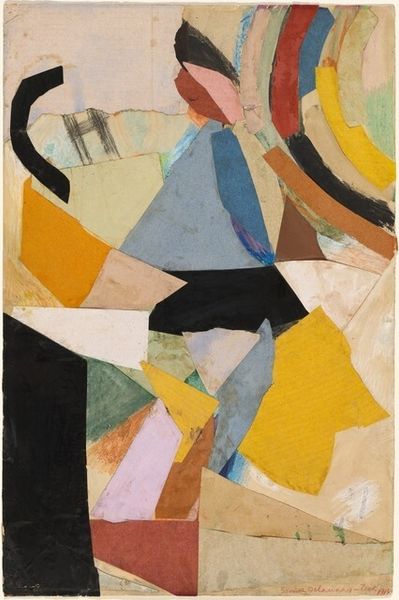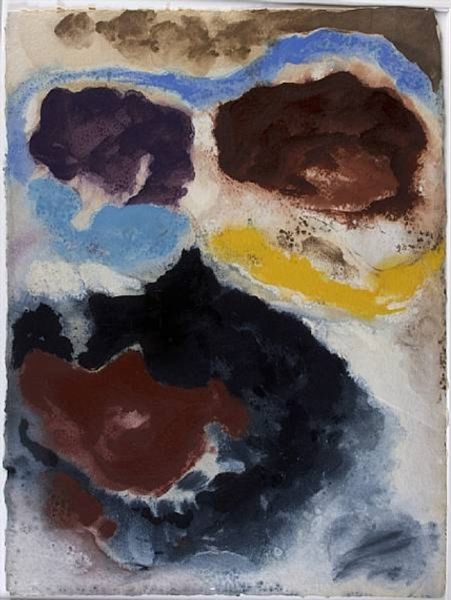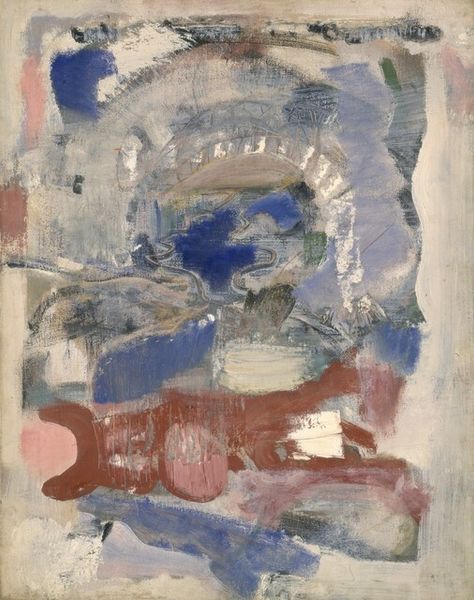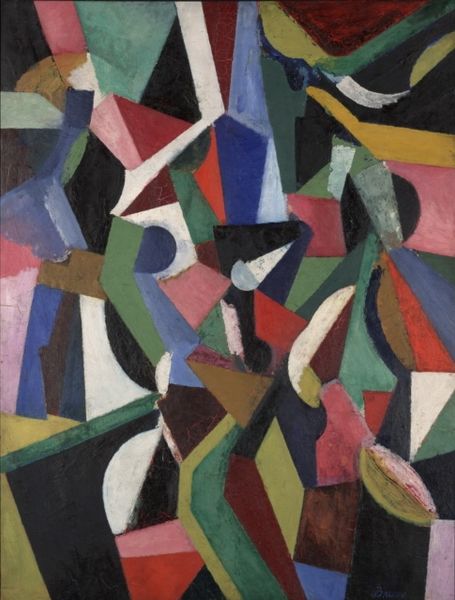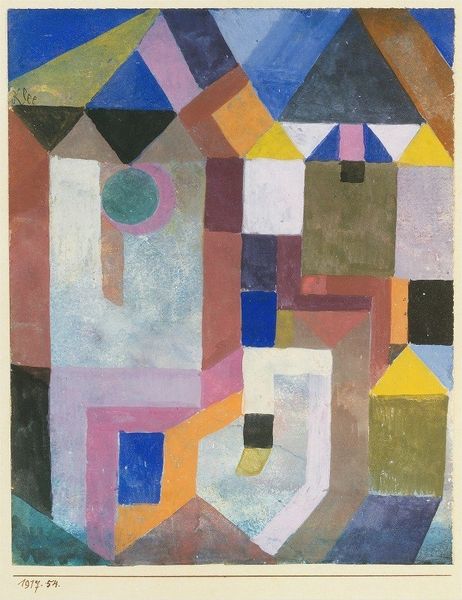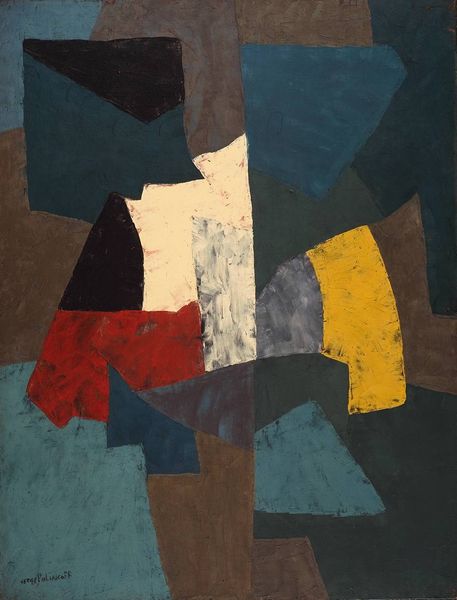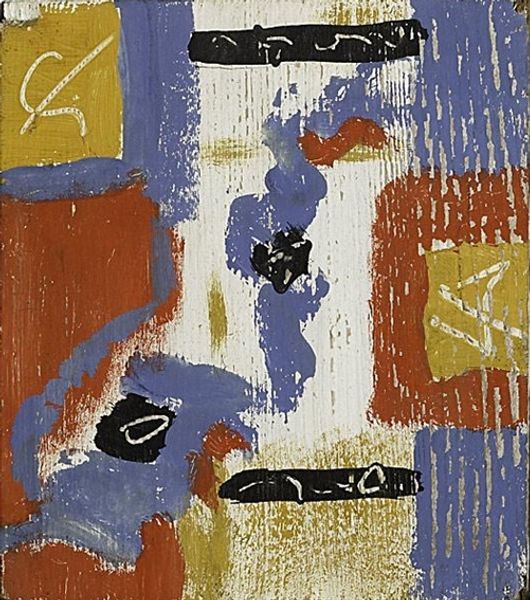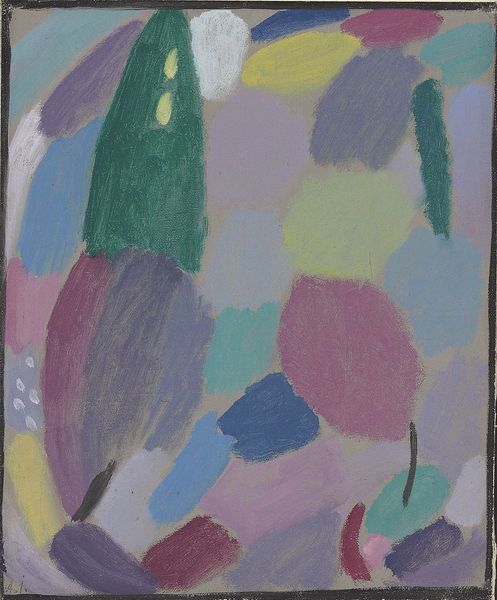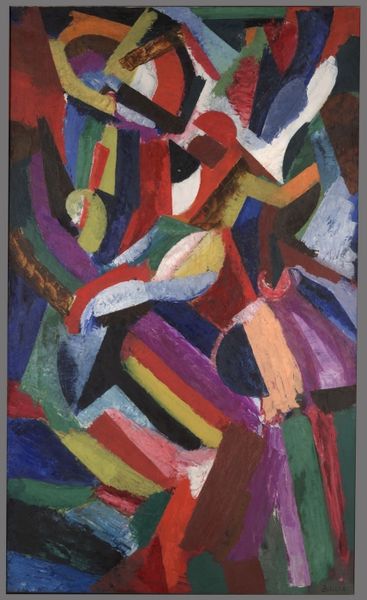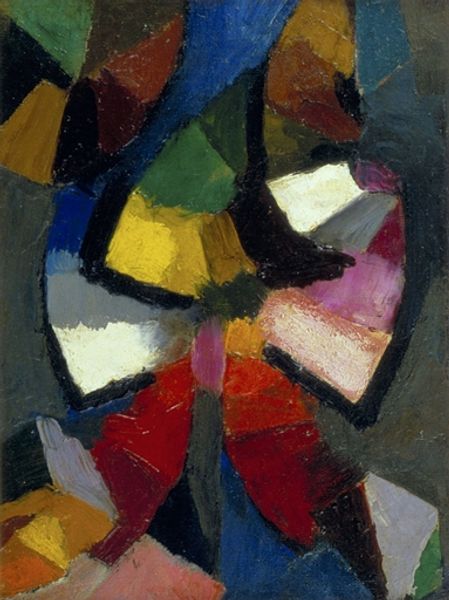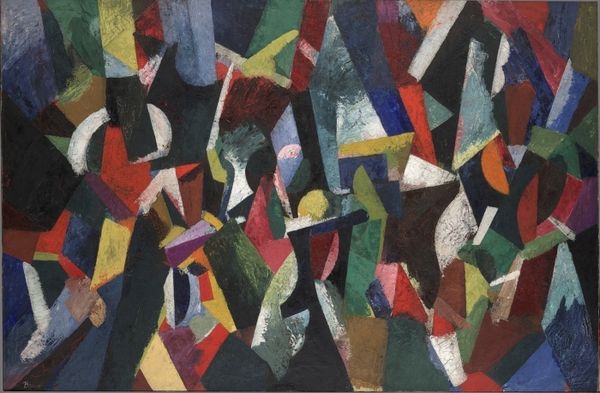
Copyright: Ernst Wilhelm Nay,Fair Use
Curator: Ernst Wilhelm Nay's "The Dancers," painted in 1958, presents a vibrant example of abstract expressionism in oil. Editor: My first impression? It feels like jazz. Not the smooth kind, more like… Monk. Off-kilter, playful, but with this deep, grounding blue that holds it all together. Curator: Interesting. The composition employs a limited palette, focusing on varying shades of blue complemented by ochre, black, grey and small amounts of lavender and white. Notice the dynamism achieved through the juxtaposition of geometric and organic shapes. The black orbs, how do they strike you? Editor: Like notes hanging in the air, sustained and unresolved. And the blues! They churn, but there's also a serenity. Is that a dancer twirling, or a mood swirling? It feels more internal than performative, like the memory of movement, not the act itself. Curator: Precisely. The work emerged during Nay's "Disc Period," which marked his definitive shift towards complete abstraction. These circular forms—the “discs”—are a crucial element, representing, as some scholars suggest, an attempt to synthesize chaos and order in a post-war world. Editor: Ah, so it’s like trying to find the beat after the music's stopped, picking up the fragments and making something new. Nay manages to channel raw emotion while keeping the whole piece wonderfully composed. The tensions makes this painting more intriguing, in my view. Curator: A testament to Nay's masterful ability to blend vibrant color with a structurally sound, if unconventional, composition. His influence on the development of post-war German art cannot be overstated. Editor: It reminds you that beauty isn’t always neat and tidy. Sometimes, it's in the joyous, messy explosion of feelings, and finding the dance within it all.
Comments
No comments
Be the first to comment and join the conversation on the ultimate creative platform.

